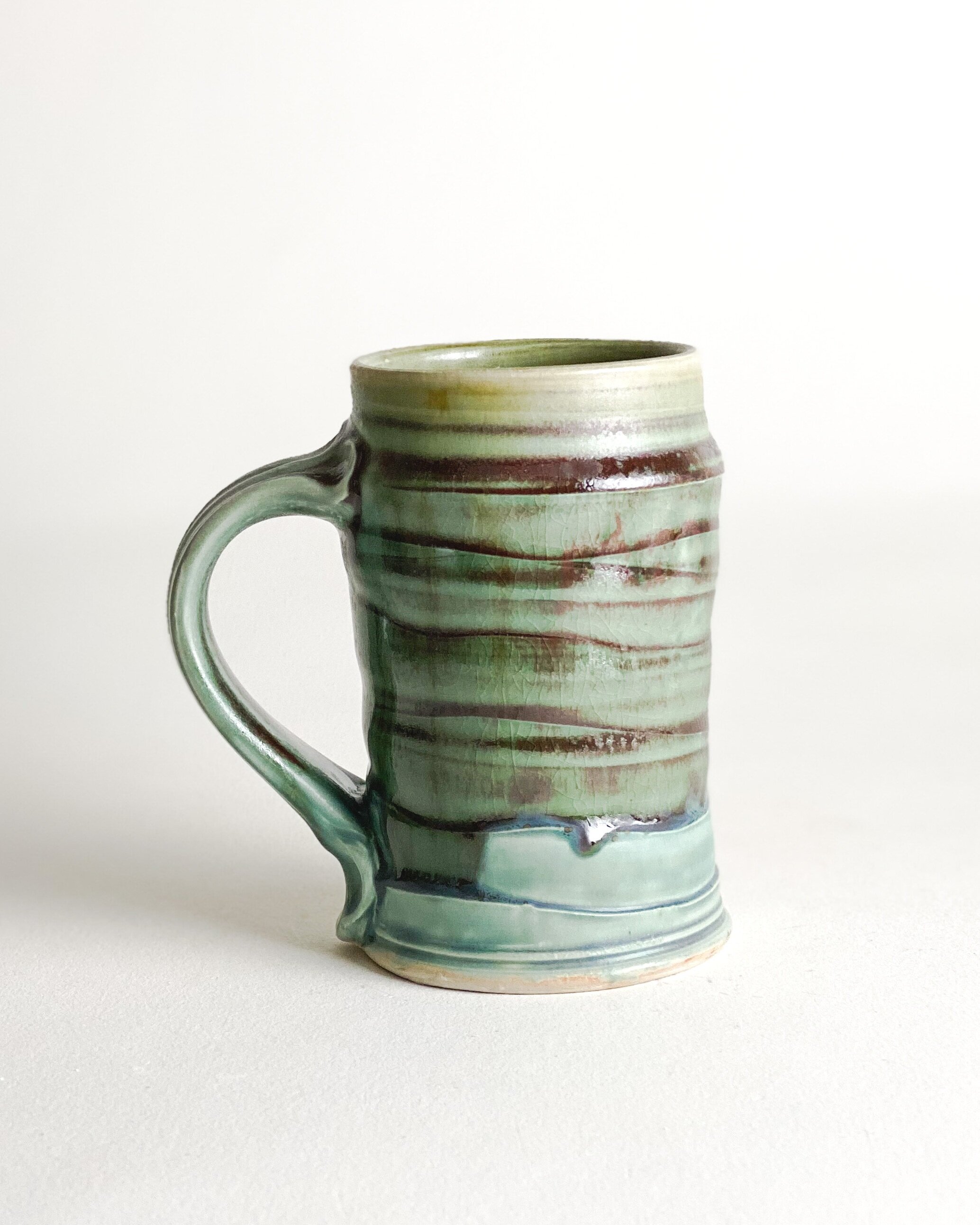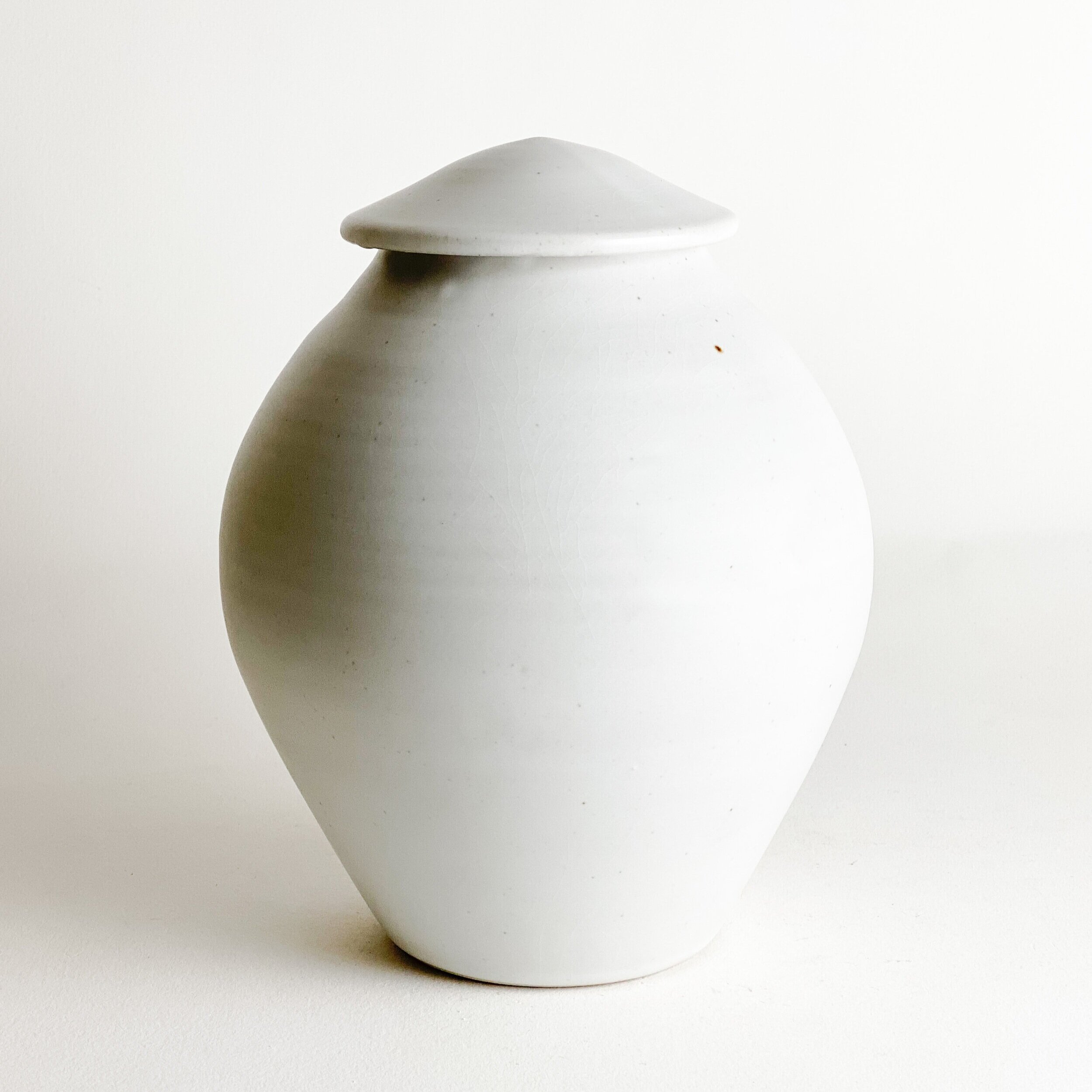When Kent talks about making porcelain pottery, people sometimes look perplexed. I imagine they envision Grandmom’s ‘china’ with golden rims and floral motifs, the delicate dinner set that comes out once a year or once in a lifetime. It is hard for people to reconcile the image of those dainty decorative dishes with handmade porcelain pottery, but the two have at least one thing in common.
Spiral-wedged Porcelain Clay
‘China’ vs. Porcelain
The main similarity between ‘china’ and handmade porcelain pots is their similar clay body. For those of you not familiar with clay terms, there are three main types of clay that potters use: earthenware, stoneware, and porcelain. These three main types of clay encompass an endless variety of clay bodies. Clay bodies are unique blends of clays, glasses, and other minerals that have been combined to make a variety of processes and finishes possible.
The 3 Types of Clay
Earthenware clay is a clay that matures at a lower temperature. It can be a variety of colors but is often terracotta or orangy red. Potters that work with majolica glazes often use this clay. It is an excellent option for schools because electric kilns easily fire to the lower temperature required, and bright colors are achieved with little effort. The majority of wheel-throwing potters who make functional ware more often use the second type of clay, stoneware. That is what we typically use at Blue Sage Pottery.
Stoneware clay matures at a much higher temperature than earthenware. It is less porous than earthenware, making it a good option for dinnerware. The absorption of fired stoneware is 1-2 % compared to 10-15 % with earthenware clay. Stonewares are typically strong durable clay bodies that hold up to dishwashing and frequent use. For the last several years, Kent and I have used porcelaneous stoneware. Essentially this is a stoneware clay body that includes a more significant amount of kaolin clay than many other stonewares. It is a light-colored clay which allows the colors of the glazes to stay brighter, yet it has the plasticity of stoneware.
Porcelain is the third main type of clay, and like earthenware and stoneware, there are a variety of clay bodies known as ‘porcelain.’ Porcelain is what your grandmom’s ‘china’ is made of. The difference is that manufactured ‘china’ may have up to 30% cow bone ash mixed into the clay blend to achieve the desired characteristics for the industrial processes. Ceramic manufacturers in England and Europe have been mixing animal bone ash into their porcelain bodies since the 1800s. The porcelain clay bodies potters use do not have mixed animal bone ash. We use more pure porcelain clay bodies that blend feldspathic rocks and kaolins.
Porcelain Urns at the Greenware Stage
Why Porcelain?
Porcelain is prized by potters for its translucency and resonance. Despite the allure, potters often avoid using porcelain clay bodies because of the notorious working consistency. Porcelain is known to crack while drying and warp during firing. When I tried porcelain for the first time in graduate school, half of my work cracked during the drying process! True porcelains have a high learning curve!
Despite the difficulty of working with porcelain, Kent has recently spent his spare time experimenting with several different porcelain clay bodies. Inspired by Sung Dynasty pots, he began a quest to make elegant porcelain forms with little of the texture he commonly used. He has been particularly interested in making porcelain urns that are ‘light and bright,’ and his pots from our most recent firing fit that description. Because there are no iron or fire clays mixed into the porcelain, like you would find in stoneware bodies, Kent has achieved whites and celadons like never before. Below are examples of some recent porcelain urns.
If you want to check out more of Kent’s porcelain experiments, follow him on Instagram.







